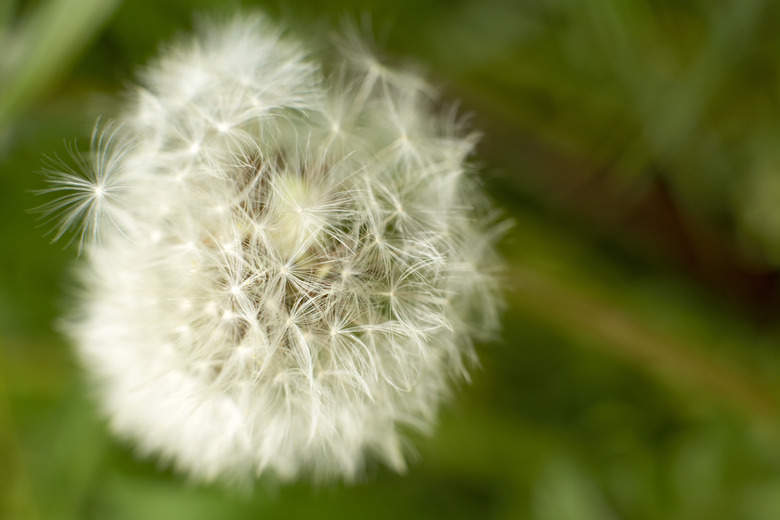Seven Life Processes Of A Plant
Like animals, fungi and all other living organisms, plants undergo different life processes that enable them to grow and reproduce. The seven life processes involve gaining nourishment, excreting waste material, growth, reproduction, sensitivity, respiration and movement.
The Process of Movement
The Process of Movement
Although not as mobile or as rapid as animals, plant do undertake movement. Many plants open their flowers during the day and close them at night. Some, like sunflowers, will follow the path of the sun as it moves through the sky. Other flowers, such as honeysuckle, open their flowers at night to attract nocturnal pollinators.
Other examples of plant movement include the tendrils of pea plants that wave about in search of support. Some Mimosa species will droop and fold their leaves when touched as a form of protection, while carnivorous plants such as the Venus flytrap will snap shut to capture prey.
The Process of Respiration
The Process of Respiration
Like all living organisms, plants undergo respiration as a means of obtaining the cellular energy used for growth and other processes. Respiration involves the conversion of sugars and oxygen into carbon dioxide and water. This produces energy that is available for use transported around the cell in the form of adenosine triphosphate, or ATP. Respiration can be considered the opposite, or reversal, of photosynthesis.
The Process of Sensitivity
The Process of Sensitivity
Plants are sensitive to stimuli in their environment and will react in response to these stimuli. For instance, many seeds use soil temperature to determine the optimal germination time. They will then grow in response to light and gravity stimuli, sending their leaves and shoots towards the sun and their roots into the ground.
The Process of Plant Growth
The Process of Plant Growth
Growth in plants is required for them to reach maturity and be able to reproduce. Plants grow in response to external stimuli, and require sufficient water, light and nutrients in order to survive, grow and reproduce. The process of plant growth is determined by a plant's physiology. Major forms include trees, shrubs and other woody plants, wildflowers, herbs and other annual species, grasses and vines.
The Process of Reproduction
The Process of Reproduction
The process of plant reproduction involves the production of a seed. Most modern plants are angiosperms, which means their seeds are produced within a flower and are protected by a fruit. This group includes grasses, flowers, herbs and the majority of trees and shrubs. Gymnosperms are a smaller, more ancient group that produces unprotected seeds and includes conifers, cycads and ferns.
The Process of Excretion
The Process of Excretion
Cellular processes and other biological processes produce a variety of waste compounds which must be excreted before their concentration reaches toxic levels within the organism. The main method of waste excretion in plants is through pores on the leaves called stoma. The carbon dioxide produced by respiration is released into the atmosphere through the stoma.
Some plants that live in highly saline environments can excrete excess salt through the stoma as well. Other plants direct waste into the leaves or other peripheral structures that are later shed. This concentration of waste products is particularly notable in deciduous trees and is responsible for the stunning leaf colors of fall.
The Process of Nutrition
The Process of Nutrition
Nutrition involves ingesting all the molecules in the environment required to keep an organism alive. This includes sugars and proteins for energy and growth, essential minerals and water. While animals gain the majority of their nutrition by ingesting food and water, plants produce their own through their roots and leaves.
In the leaves of plants, the process of photosynthesis uses sunlight to combine carbon dioxide and water into sugars and oxygen. The water is drawn from the soil through the plant's roots and into leaves during the plant's respiratory processes. Dissolved minerals in the water provide the other elements plants require for growth.
Cite This Article
MLA
Michelle, Meg. "Seven Life Processes Of A Plant" sciencing.com, https://www.sciencing.com/seven-life-processes-of-a-plant-12348504/. 30 September 2021.
APA
Michelle, Meg. (2021, September 30). Seven Life Processes Of A Plant. sciencing.com. Retrieved from https://www.sciencing.com/seven-life-processes-of-a-plant-12348504/
Chicago
Michelle, Meg. Seven Life Processes Of A Plant last modified March 24, 2022. https://www.sciencing.com/seven-life-processes-of-a-plant-12348504/
